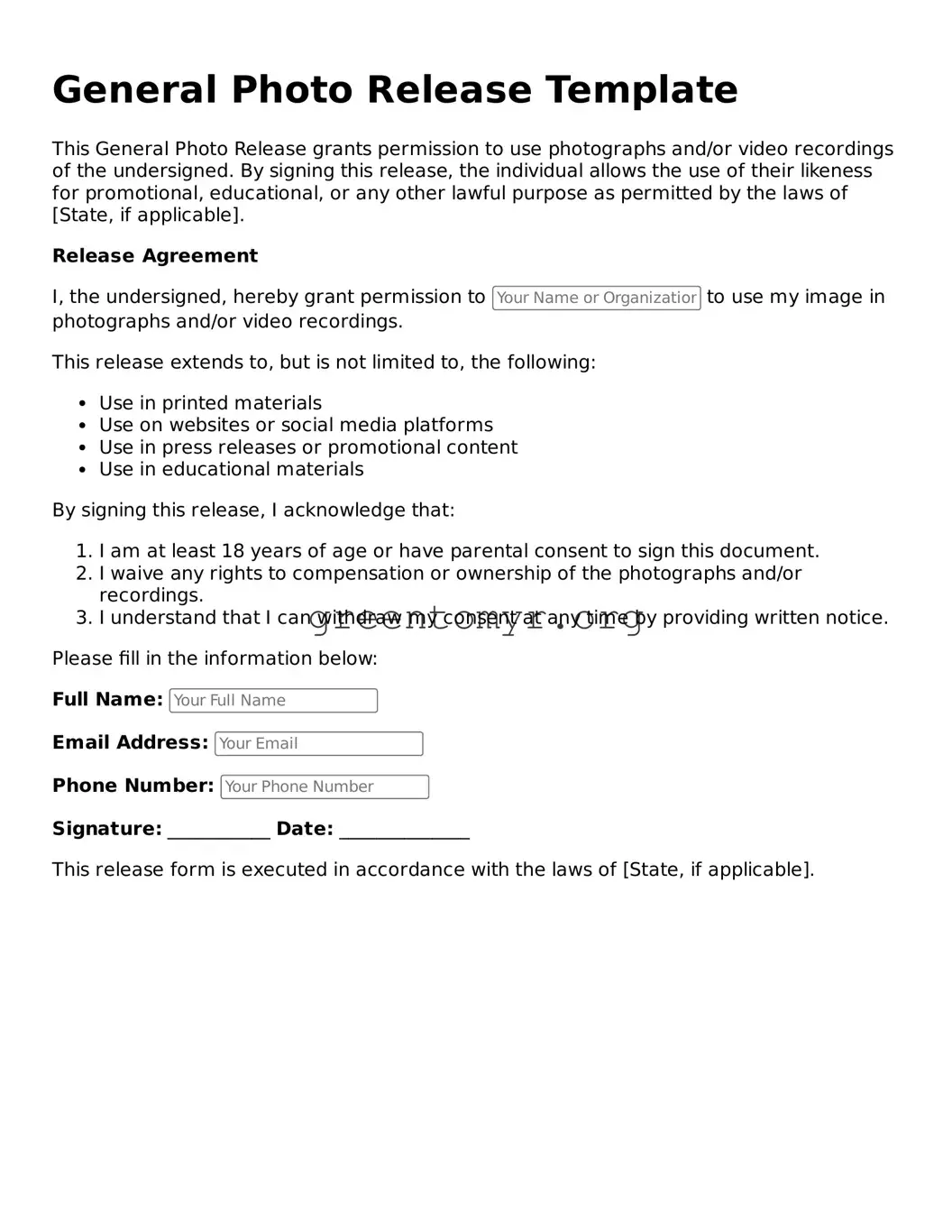Filling out a General Photo Release form may seem straightforward, but many people encounter common pitfalls that can lead to complications later on. One frequent mistake is not providing all required information. When sections are left blank or incomplete, it can render the release invalid. Always double-check to ensure that your name, contact information, and any other requested details are filled in completely.
Another common error is failing to specify the purpose of the release. It’s important to clearly outline what the photos will be used for, whether it’s for commercial purposes, promotional materials, or personal use. Without specifying the use, you may encounter issues regarding consent later.
People often overlook the need for signatures from all parties involved. If the photo features multiple individuals, it’s crucial to secure consent from everyone depicted. Without this permission, you might face legal challenges down the road, including potential claims of invasion of privacy.
Assuming implied consent is another common misunderstanding. Many think that being photographed in a public setting means they automatically agree to their image being used. However, in many cases, explicit permission is still required, especially if the images are going to be distributed or sold.
A mundane yet significant mistake is not dating the form. Without a date, it becomes difficult to ascertain the timeline of the agreement. This lack of clarity can be problematic if disputes arise or if the terms of use change over time.
Additionally, people often neglect to read the entire form thoroughly. Many individuals rush through the process and overlook important clauses or limitations. Understanding what you are signing is critical to ensuring that you are comfortable with the agreement and its implications.
While it may seem harmless, inaccurately describing the images can lead to misunderstandings. If the form lists specific images but includes others that were not discussed, this could create confusion or disputes later about what was actually authorized.
Another frequent issue is not retaining a copy of the signed release. Keeping a record of the signed form is essential for future reference. If any questions arise regarding the use of the images, having a copy on hand can protect your interests and establish clarity.
Lastly, people sometimes fail to understand the consequences of granting a photo release. Many might not realize that this could allow the photographer or organization to use their image in ways they hadn’t intended. It's important to consider the potential implications before finalizing your release.
